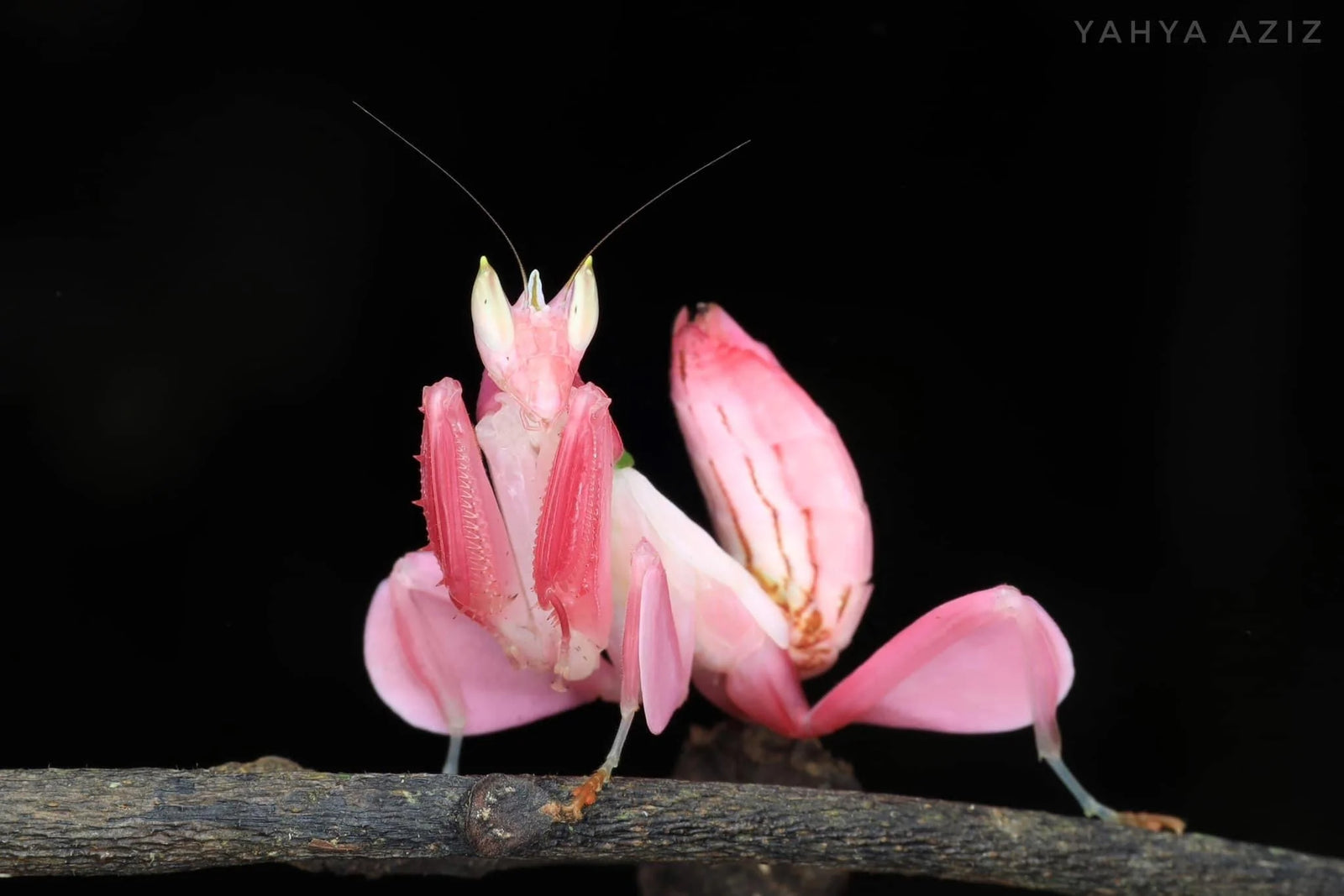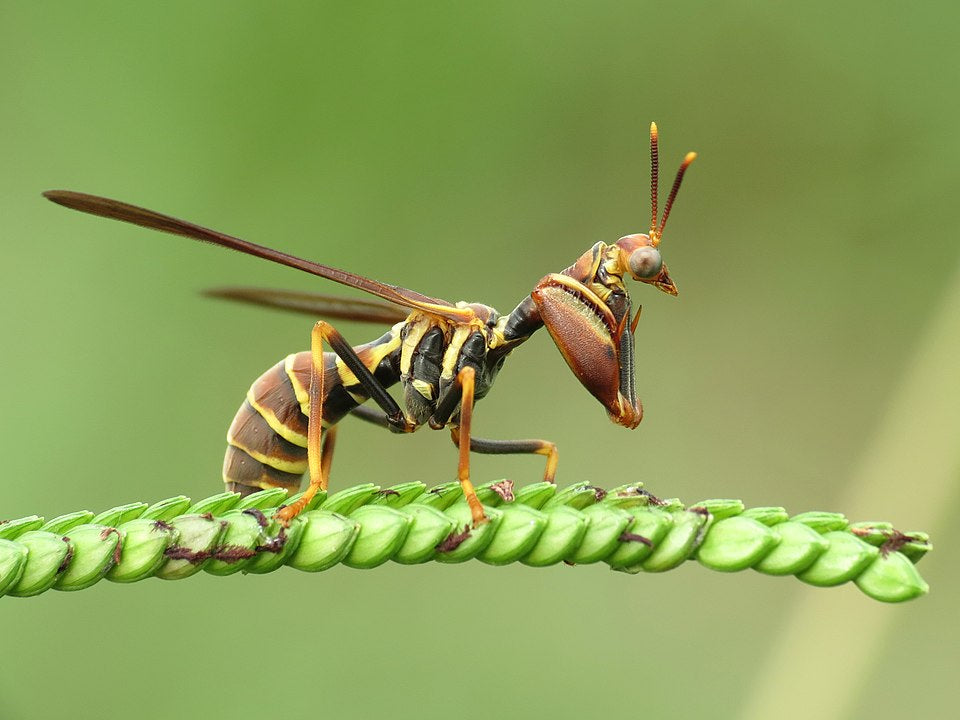Menu
-
- Home
- Contact
- Search
-
Shop
- Live Feeder Insects
-
Supplies
- Habitats
- Feeders
- Feeders and Microfauna Breeding Supplies
- Bioactive Kits
- Bioactive Supplies
- Containers
- Insect Culture Cups
- Insect Culturing Cups and Lids
- Classroom Projects
- Live Air Plants bioactive
- Substrates
- Lighting and Heating
- Cages, Habitats, Bug Boxes, Vivariums, Insectariums
- Bark
- Shipping supplies, Heat packs, cold packs, containers
- Bio-Active
- Plants
- Mantis Gallery
- Usmantis Reviews
- Praying Mantis
- Mantis
- Praying Mantis eggs ootheca for pest control
- BioActive Supplies
- Beneficial Insects
- Help Videos
- Top 5 Praying mantis as pets,
- Blog
-
Shop By Family
- Praying Mantis
- Care Sheets
- Track Order
- Live Feeder Insects
- Wholesale prices for bulk orders
- FAQ
- Galleries of Mantis Videos
-
- Home
- Search
- About us
- Shipping
- Refund Policy
- Track Orders
- Contact us
- Blog
- Beneficial Insects
- Sitemap
- Reviews
-
Film production resources
- Wholesale
- FAQ
- Login
-
English

Do insects have feelings? Love or Hate? What’s your opinion
September 09, 2024 3 min read
The entomology literature has historically suggested insects cannot feel pain, leading to their exclusion from ethical debates and animal welfare legislation. However, there may be more neural and cognitive/behavioural evidence for pain in insects than previously considered. We use Birch et al. 's (2021) eight criteria for sentience to critically evaluate the evidence for pain in insects. We assess six orders (Blattodea, Coleoptera, Diptera, Hymenoptera, Lepidoptera, and Orthoptera) in at least two life stages (adult and first instarjuveniles, as well as other instars where relevant data are found). Other insect orders have not received enough research effort to be evaluated. According to the Birch et al. framework, adult Diptera (flies and mosquitoes) and Blattodea (cockroaches and termites) satisfy six criteria, constituting strong evidence for pain. Adults of the remaining orders (except Coleoptera, beetles) and some juveniles (Blattodea and Diptera, as well as last instar Lepidoptera [butterflies and moths]) satisfy 3–4 criteria, or “substantial evidence for pain”. We found no good evidence that any insects failed a criterion. However, there were significant evidence gaps, particularly for juveniles, highlighting the importance of more research on insect pain. We conclude by considering the ethical implications of our findings where insects are managed in wild, farmed, and research contexts.
How we evaluate evidence for pain
In a report commissioned by the UK government, Birch et al. (2021) developed a new framework for evaluating evidence of animal sentience, with a focus on pain (later published as Crump et al., 2022). Birch et al. (2021) write that “pain is one example within a broader category of negatively-valenced affective states, a category which also includes states of anxiety, fear, hunger, thirst, coldness, discomfort and boredom” (Birch et al., 2021, p. 12). Building on previous work (e.g., Bateson, 1991
Criterion 1: Nociception
The animal possesses receptors sensitive to noxious (i.e., potentially or actually harmful, damaging) stimuli (nociceptors)
This criterion specifies the most basic prerequisite for experiencing pain. If fulfilled, the animal has the neurobiological capacity for nociception. Vertebrates detect noxious stimuli through specialised peripheral sensory neurons: nociceptive neurons (Dubin and Patapoutian, 2010), characterised by free nerve endings under the epidermis.
join the discussion
Summary of evidence for insect pain
In Section 3, we assessed the evidence for k my each criterion in adults and juveniles of six insect orders. Table 11 summarises our confidence levels for adults, and Table 12 summarises our ratings for first (and last) instar juveniles.
Birch et al. (2021) suggested an approximate grading scheme for communicating the strength of evidence for sentience (specifically for pain). The five grades were:
-
1.
Very strong evidence: High or very high confidence that 7–8 criteria are satisfied. Welfare protection
Ethical considerations for the use or management of insects
Insects are managed in a variety of contexts that may raise welfare concerns, including the food and feed industry, silk/shellac/dye production, waste management, pest/invasive species management, wildlife conservation, beekeeping, zoos and insectariums, research/education settings, the entertainment industry, in medicine, and as pets. By far, the largest number of insects with welfare impacted by human management will be in wild/agricultural settings, followed by the growing insects as food
Conclusion
Using the Birch et al. (2021) framework, we reviewed the evidence for sentience (and specifically pain) in six insect orders across their development. We found “strong evidence” for pain experiences in adults of two orders, Diptera (flies and mosquitoes) and Blattodea (cockroaches and termites). There was also “substantial evidence” in adult Hymenoptera (bees, wasps, ants, and sawflies), Orthoptera (crickets and grasshoppers), and Lepidoptera (butterflies and moths), and “some evidence” in
Acknowledgements
We thank Elisabetta Versace, Katrin Vogt, Nikita Komarov and Frederic Libersat for their feedback on the manuscript.
Conflict of interest
Meghan Barrett reports a relationship with Rethink Priorities that includes: consulting.
Funding statement
This research is part of a project that has received funding from the European Research Council (ERC) under the European Union's Horizon 2020 research and innovation programme, Grant Number 851145. M.G. received funding from a Queen Mary University of London PhD Studentship. M.B. is currently funded as an NSF postdoctoral research fellow (2109399).
References (383)
-
S.A. Adamo
Do insects feel pain? A question at the intersection of animal behaviour, philosophy and robotics
Anim. Behav.
(2016)
Leave a comment
Comments will be approved before showing up.
Also in Praying Mantis News! Join the conversation.

orchid mantis evolutionary research
June 06, 2025 2 min read
The orchid mantis (Hymenopus coronatus) transitions from black-and-red to pink-white coloration during development, a shift driven by the Redboy pigment transporter. This transition serves different ecological functions: red coloration helps hatchlings mimic stink bugs for predator avoidance, while the pink-white coloration of older nymphs provides floral camouflage for both predator avoidance and prey attraction. The Redboy transporter, upregulated by ecdysone, facilitates this shift by exporting red pigments in early stages and importing white pigments in later stages.
Evolutionary Basis:
Redboy's Role:
The Redboy transporter, a novel ABCG transporter, arose by gene family expansion and positive selection, specifically to handle the transition from red to white coloration, according to research on Nature.
Hormonal Regulation:
The hormone ecdysone regulates Redboy, ensuring the pigment transition happens at the appropriate developmental stage, according to research on ResearchGate.
Genetic Adaptation:
The evolutionary changes in Redboy have allowed orchid mantises to adapt their body color to different life stages and ecological niches.
Ecological Functions:
Aposematic Mimicry (Hatchlings):
The initial black-and-red coloration serves as a warning signal, mimicking the appearance of stink bugs, which are known to be distasteful or toxic to predators.
Camouflage (Older Nymphs):
The pink-white coloration provides floral camouflage, helping the mantis blend in with flowers and avoid detection by predators.
Prey Attraction:
The flower-like appearance also attracts unsuspecting prey, such as small insects, to their location, enhancing the mantis's hunting success.
In summary, the orchid mantis's body color transition is a fascinating example of ontogenetic camouflage and adaptive evolution, where the color changes throughout the mantis's life serve distinct ecological roles in where the color changes throughout the mantis's life serve distinct ecological roles in predator avoidance and prey attraction.
Read More

Mantis fly Mantispidae, very special insect
October 15, 2024 3 min read
Mantispidae, they don’t sting! 

Recent Articles
-
orchid mantis evolutionary research
June 06, 2025
-
New Yorker article 1955 Mantis Man
March 09, 2025
-
Mantis fly Mantispidae, very special insect
October 15, 2024
-
Do insects have feelings? Love or Hate? What’s your opinion
September 09, 2024
-
How Praying Mantises Hear: One ear
July 19, 2024
-
Identifying Domestic species
July 19, 2024
-
Invasive claims and irresponsible advice
April 13, 2024
-
Is it time for insect researchers to consider their subjects’ welfare?
April 08, 2024
-
My Awesome Summer by P. Mantis Children’s book
April 07, 2024
-
Toxodera
April 06, 2024
Categories
- animal husbandry
- best feeders
- best mantis for pest control
- breeding praying mantis
- buy praying mantis
- Cannabis
- crickets
- discussion
- dormitory pet
- Drosophila
- education
- egg
- entomology
- fertility
- flightless fruit flies
- Flower mantis
- Friendly Bugs For Cannabis
- fruit fly culture
- geometric morphometrics
- Ghost mantis
- happy experience with pets
- Hydei
- Hymenopodidae
- Hymenopus coronatus
- invasive
- keeping insects alive
- Lucky mantis
- Major League baseball Perez Kisses Lucky Mantis!
- make money
- mantis for dummies
- mantis ooth
- Mantodea
- melanogaster
- mimicry
- mismolt
- new species
- ooth
- ooth care
- ootheca
- P paradoxa
- pest
- Pest control
- pet nutrition
- praying mantis
- praying mantis care
- praying mantis for sale
- reptile feeders
- School project
- scientific research
- Sexing praying mantis
- Shipping
- signalling
- stem
- stenophylla
- Store news
- stress from shipping
- usmantis
- we buy mantis
Menu Title
This section doesn’t currently include any content. Add content to this section using the sidebar.
Subscribe
Sign up to get the latest on sales, new releases and more …
Invalid Password
Enter
- How we evaluate evidence for pain
- Criterion 1: Nociception
- Summary of evidence for insect pain
- Ethical considerations for the use or management of insects
- Conclusion
- Using the Birch et al. (2021) framework, we reviewed the evidence for sentience (and specifically pain) in six insect orders across their development. We found “strong evidence” for pain experiences in adults of two orders, Diptera (flies and mosquitoes) and Blattodea (cockroaches and termites). There was also “substantial evidence” in adult Hymenoptera (bees, wasps, ants, and sawflies), Orthoptera (crickets and grasshoppers), and Lepidoptera (butterflies and moths), and “some evidence” in
- Acknowledgements
- Conflict of interest
- Funding statement
- References (383)